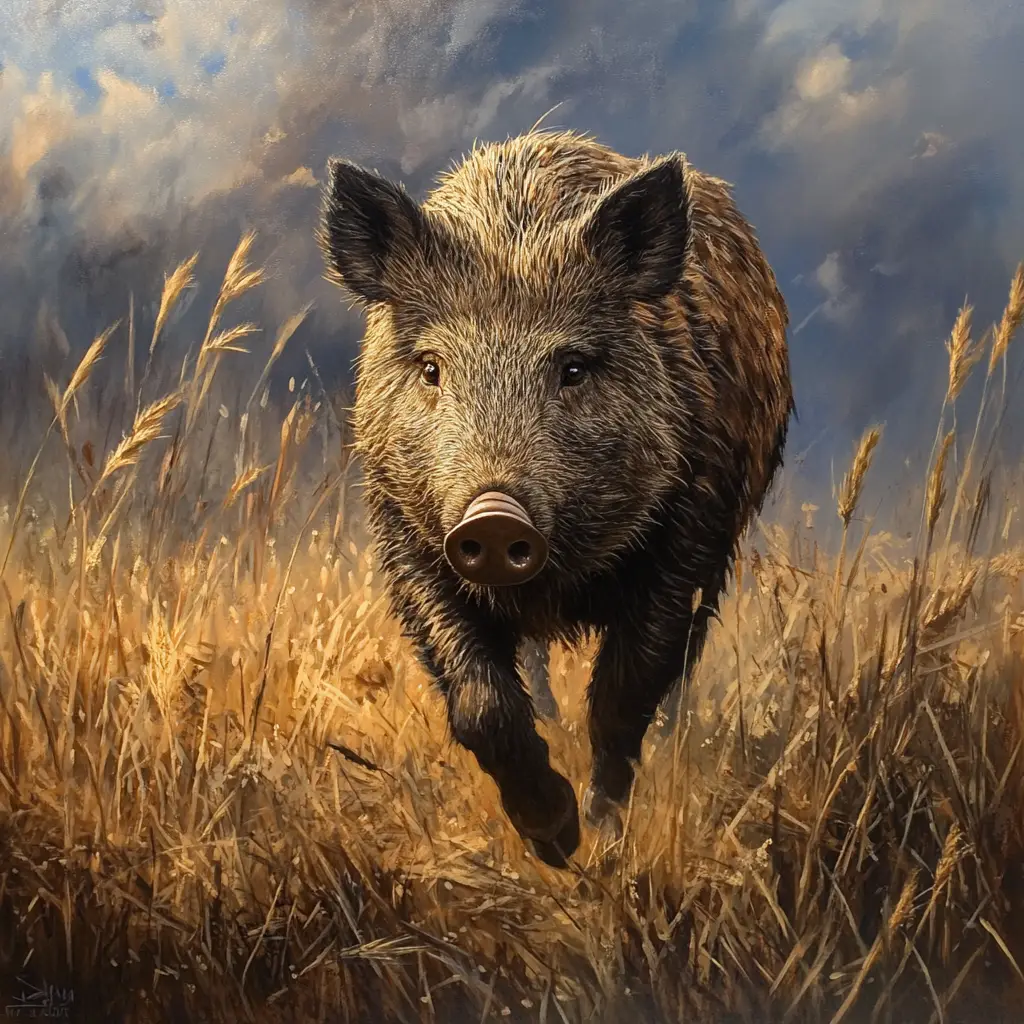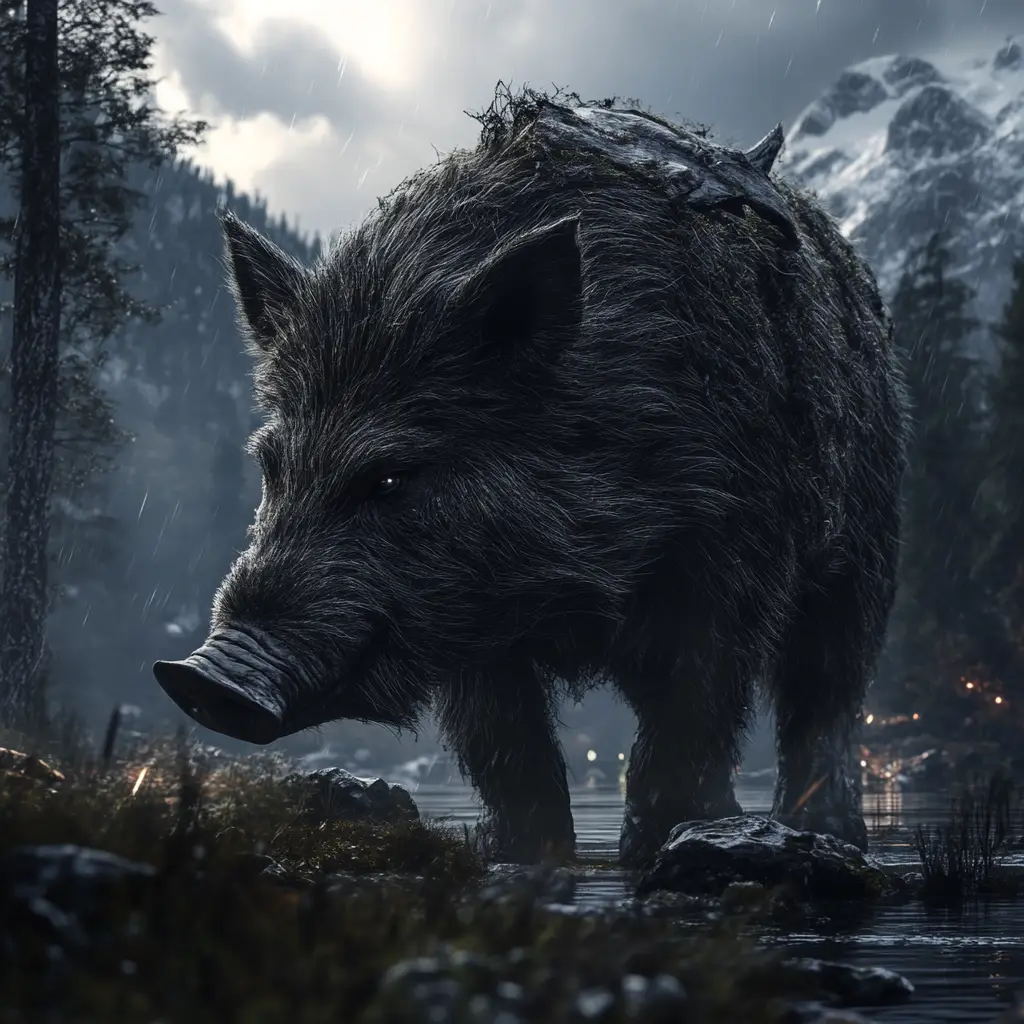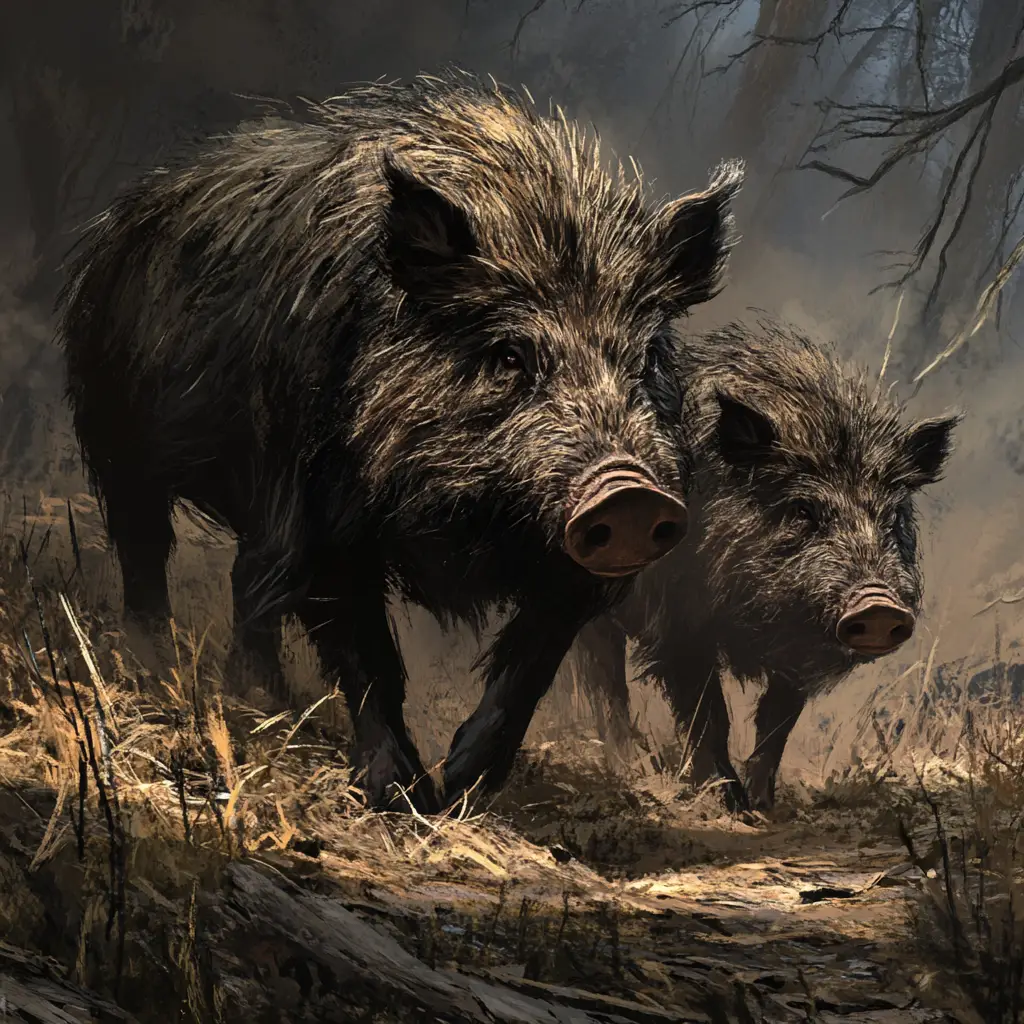The Sónargöltr is a boar associated with Norse pagan rituals, particularly in the celebration of Yule (Jól), the midwinter festival. It played a central role in ceremonies related to fertility, prosperity, and the harvest, and was dedicated to the god Freyr, a deity of fertility, peace, and abundance. The boar itself was symbolically important in Viking culture, representing strength, renewal, and the cycle of life.
Key Aspects of the Sónargöltr
Yule Rituals
During Yule, the Sónargöltr was a sacrificial boar (often real but sometimes represented by a figurine or loaf of bread in later traditions). It was offered to Freyr as a plea for fertility and a prosperous harvest in the coming year. The sacrifice was meant to ensure abundance, growth, and peace for the community.
The tradition of sacrificing or symbolizing the boar during Yule celebrations likely influenced later customs, such as the modern Christmas ham, which has its roots in these ancient Norse rituals.
Blót Sacrifice
In the Norse tradition, the Sónargöltr was part of the blót (sacrificial offerings), an important pagan ritual in which animals were sacrificed to appease the gods and ask for blessings. The blood of the Sónargöltr would be sprinkled as a form of sanctification, and the meat would be consumed in a communal feast, reinforcing bonds within the tribe.
The boar was seen as a sacred animal that could carry the prayers and hopes of the people to Freyr, ensuring a fertile and fruitful year.
Symbolism
Fertility and Prosperity: As Freyr’s sacred animal, the Sónargöltr symbolized the life-giving forces of nature. By sacrificing or invoking the boar during Yule, the Vikings aimed to ensure a bountiful harvest and general prosperity for the following year.
Renewal and New Beginnings: The midwinter Yule festival marked the turning point of the year, celebrating the return of the sun and the promise of spring. The boar, with its connection to fertility and rebirth, was a fitting symbol for this time of renewal and the cycle of life.
Connection to Freyr
The Sónargöltr is deeply connected to the god Freyr, whose golden boar Gullinbursti was also a symbol of fertility and prosperity. Freyr, as a god of agriculture, ensured the fertility of the earth and the success of the harvest, and the boar was his sacred animal.
By honouring the boar, worshippers were essentially paying tribute to Freyr and asking for his blessings on their crops, livestock, and overall well-being.
Influence on Later Traditions
The practice of honouring or sacrificing a boar during the Yule season has echoes in modern-day customs. The tradition of serving a Christmas ham is thought to have roots in the Sónargöltr, continuing the symbolic connection between the boar and the celebration of the winter solstice, even after the spread of Christianity in Scandinavia.



